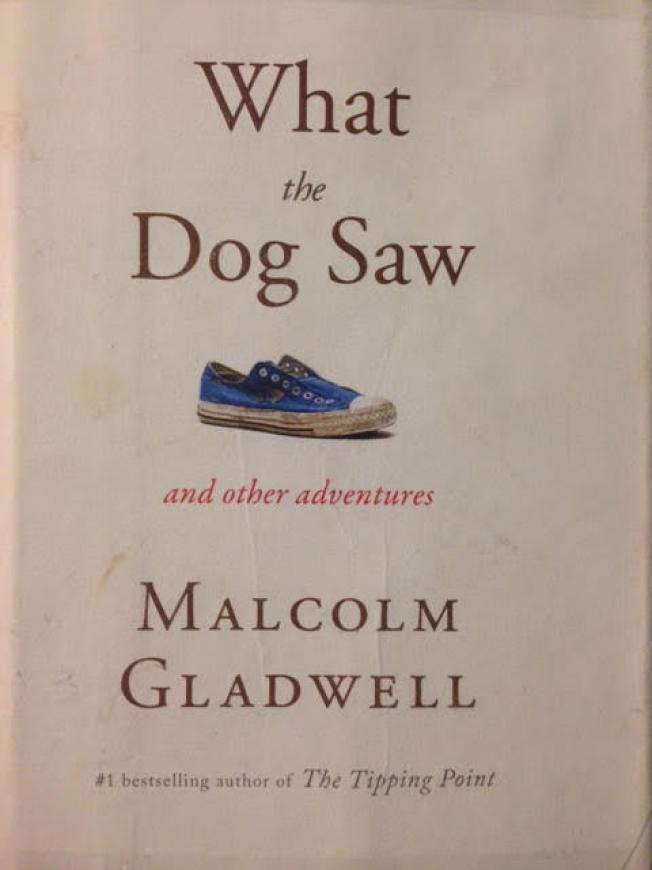Written by Thu Tran, MD,FACOG
January 26, 2016

Every time I’m on vacation, I bring a book to read but never seemed to finish it. The vacation destination takes my mind off the book and I end up savoring every waking minute exploring the new area. Over the holidays, however, my habit changed. I started reading Malcolm Gladwell’s “What the Dog Saw” halfway into the flight to the Dominican Republic and couldn’t put it down after landing.
Malcolm Gladwell is a best selling author and reporter of the New Yorker. Gladwell has written quite a few best selling books including Blink, the Tipping Point, the Outliers, and David and the Goliath: Underdogs, Misfits and the Art of Battling Giants by Malcolm Gladwell, reviewed on our website by Dr. Linda Yau in 2015.
“What the Dog Saw” is a collection of Gladwell’s favorite essays published in the New Yorker. The essays cover a variety of topics each meticulously researched by Gladwell. These are essays about the ordinary things around us and activities in which we often participate but do not pay attention to. Gladwell’s intense curiosity and his powers of observation show how he is a genius of a writer. He pursues every clue or lead to a topic, like a brilliant investigator who wants to unearth the deepest truth of the matter. His mind is brilliant, and he’s fortunate to have mastered the skill of story telling, one story after another in his pursuit for truth.
Reading each of Gladwell’s stories in “What the Dog Saw” was such a joy, as I learned so many things I had never known before. Most of his topics involve either “hard core” science, or psychology and human nature. He interviewed the most interesting experts on the topics and explains them in meticulous detail to make sure we see things the way he sees them. As Gladwell explains, you have to put yourself in a person’s mind to understand what he thinks or why he acts the way he acts.
To understand the statistics of how mammograms save lives, for example, in the essay “The Picture Problem,” Gladwell interviewed experts such as Dr. Gilbert Welch, a medical-outcomes expert at Dartmouth Medical School. He compared having a mammogram to having a thorough breast exam by interviewing Mark Goldstein, a sensory psychophysicist who cofounded MammaCare, a company training nurses and physicians in the art of the clinical exam. Did you know there are specialists in “sensory psychology”?
In “True Colors,” an essay about the history of the hair color industry, Gladwell shows how the feminist movement went hand in hand with the hair color industry, as Clairol competed against L’Oreal. True Colors was quite entertaining, as the readers begin to understand how marketing for the hair color businesses reflected what was on women’s minds during particular eras.
In “The Art of Failure,” a poignant essay about the plane crash of John Kennedy Jr. in 1999, Gladwell takes the readers on a similar flight with a professional pilot to demonstrate how JFK’s mind was operating on that terrible night on the way to his cousin’s wedding, when he could no longer see the coastline below and had to fly in total darkness. JFK’s sense of panic, according to Gladwell, eventually led to the plane crash, killing him, his wife Carolyn Bessett and her sister. I could really feel the panic in JFK’s mind, and the sadness for something that could have been avoided if it was not for the many circumstances around that fateful flight.
Gladwell’s “What the Dog Saw” is a balanced collection ranging from serious subjects such as the Challenger explosion to light hearted subjects such as the ketchup and mustard industry and how marketing and psychology can change the food industry. Gladwell also challenges our false beliefs regarding personal success in his collection of essays about intelligence, personality and character. He has such wisdom using his keen sense of observation of human behavior. He can put his mind in anybody’s mind, including the dogs’ mind in the essay “What the Dog Saw,” about Cesar Millan and his ability to train untamed dogs.
“What the Dog Saw,” is an extremely stimulating book. Gladwell’s stories will stay with you for a long time after you finish reading his book. The knowledge you gain will give you the curiosity and yearning to read another book from this knowledgeable and thorough researcher, observer-writer.
Tags: Malcolm Gladwell
